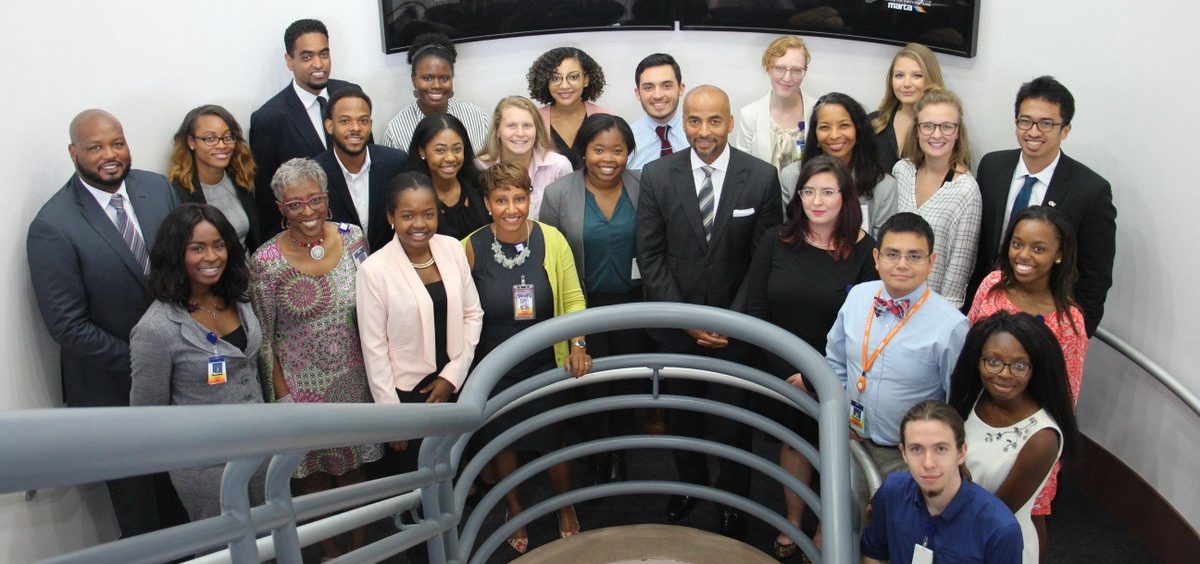The Metropolitan Atlanta Rapid Transit Authority, or MARTA, is the public transportation agency in Atlanta, Georgia. Every day, MARTA transports 432,900 riders in metropolitan Atlanta across the city. The Authority currently provides heavy rail, bus, and paratransit transportation in 3 of the 39 counties that make up Atlanta’s metropolitan statistical area (MSA), and it plans to expand service to improve connectivity throughout the region.
MARTA is the 9th largest transit operator in the United States, and as the region looks to add 2.5 million people over the next 30 years, the Authority’s services are needed throughout the metro area.
This is no easy feat, especially when some of the most defining characteristics of Atlanta are its sprawl, and its consequential traffic.
Why MARTA?
Atlanta has been ranked as the 8th most congested city in the world, and 4th within the United States. Its congestion has been attributed to the state’s focus on car-centric transportation, which has increased car dependency and consequently created a strain on accessibility for many of its residents.
As a result, automobile dependence is one of many factors contributing to environmental, public health, and socio-economic issues in the city and state:
- Each resident spends an average of 71 hours per year in traffic during peak travel hours
- Transportation accounts for 31% of the City of Atlanta’s total greenhouse gas emissions
- Georgia ranks 8th nationally for asthma prevalence
- Private automobiles are positively associated with employment—a major obstacle for public transit-dependent residents in Atlanta.
The Internship
Mobility has become what I consider to be a human right. Therefore, I feel very passionately about this topic. By joining MARTA’s Office of Transit Systems Planning team as an intern, I have been privileged to learn how my passion can have a positive impact on others.
The opportunity to focus on transportation planning in this internship has allowed me to see in “real life” some of the lessons I learned about risk and uncertainty during my first year at Bard CEP.
Transportation planning at MARTA highlights the risk and uncertainty that exist within dynamic systems. Similarly to environmental change, transportation systems change along with population, economic productivity and policies.
I have observed uncertainty in transportation as well. While buses and rail systems have the potential to reduce emissions in Atlanta, facilitate compact land use, and minimize the transportation footprint, multiple variables that can hinder the creation of a connected, appealing, and efficient system. For example:
- Agencies are limited in funds that may be tied to political endeavors
- Potential environmental impacts from transportation projects determine whether the project can move forward
- Increased popularity of ride-hailing apps can make public transportation less convenient or appealing
As an intern, I have been able to sit in on various meetings between MARTA and transit agencies. These meetings have highlighted the complexities of regional planning and coordination between agencies. Some of my responsibilities have included reviewing a Draft Environmental Impact Statement for a proposed project, social media engagement and extensive research.
Each day I gain valuable insight into how vital public transportation is, not only for residents but for corporations and organizations in the city. Many have acknowledged public transit as being a critical component to economic vitality in Atlanta.

Atlanta’s Transportation Future
The pitfalls of prioritizing money to accommodate private cars may now be coming to light in Atlanta. Infamously, Georgia’s Interstate-85 bridge burned down in March of this year. This was a wake-up call for the approximately 250,000 drivers who used I-85 in their daily commute.
MARTA usage increased by 21% during repair of the bridge. However, this mode shift was unfortunately short-lived as many of these habitual drivers returned to their vehicles upon the bridge’s repair.
Increasing MARTA’s presence will require winning over many residents in the greater metropolitan area. Fortunately, attitudes towards MARTA are shifting positively in the rapidly developing city core. This is evident in the decision by voters in the City of Atlanta to approve a sales tax increase to expand MARTA.
It is exciting to see changing perceptions toward public transportation in Atlanta and to be in the midst of planning for the city’s future. Atlanta’s infrastructure challenges and the city’s anticipated growth provides multiple lessons. We Atlantans should be careful not to burn our bridges, as public transportation may be our best bet.


Great post! You really are helping Atlanta lay some ground work to become less car dependent and more reliant on public transport in the future. I’m glad you’re using your extensive understanding of public-private partnerships when MARTA assesses key stakeholders available to increase its capacity. Can’t wait to see what changes MARTA makes in the future. Great job, Chelsae!
Hey Amanda, thanks for reading! Yes, while MARTA currently hasn’t used P3s to the extent that other national transit agencies have, it’s still very common to hear people inquire about how P3s work and I am always prepared. Take care!
Chelsae.